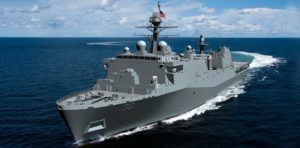
The Senate Armed Services Committee (SASC) version of the FY ‘22 defense policy bill would extend authority for the Navy to buy several amphibious vessels at once, but also asks the service to provide reports on the merits for the decision and upgrade potential. Last year, the FY ‘21 defense authorization act included a provision allowing the Navy to procure three San Antonio-class LPD-17 amphibious transport dock ships--LPD-32, LPD-33 and LPD-34--and one America-class amphibious assault ship, LHA-10, at once (Defense…

 By
By 











